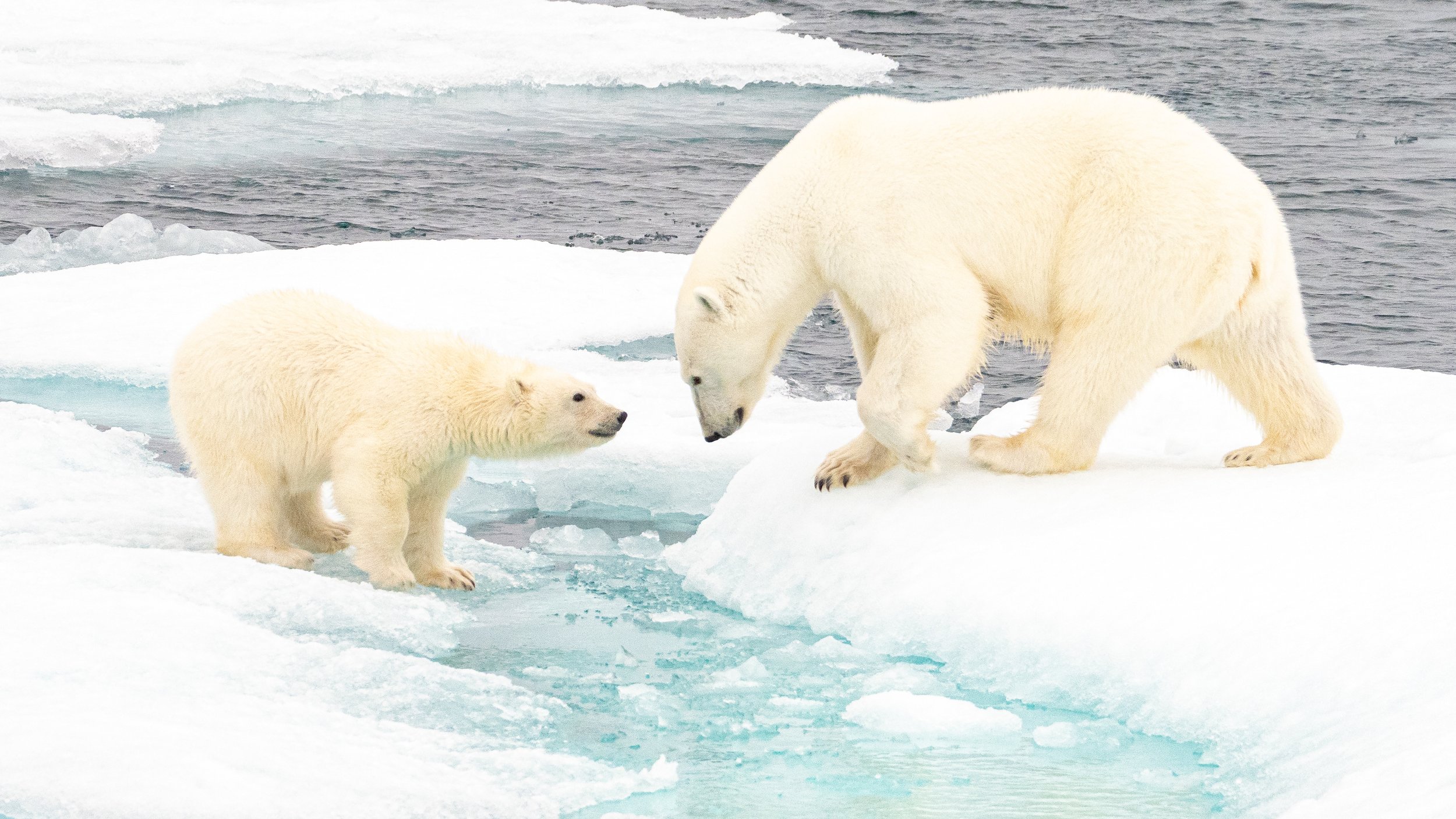
For the first two to three years of life, bold and fragile polar bear cubs are completely dependent on their mother’s care. However, modern conditions have pushed young bears to presently be learning to survive in a rapidly changing Arctic with conditions that the mother has only recently experienced herself. Melting sea ice has led to arduous swims early in life. Young bears are not well adapted to swimming long distances between ice floes. They are leaner than their mothers, with less fat reserves to insulate their bodies. Body fat helps with buoyancy, making it more difficult to keep the head out of water for cubs. The hunt for food must shift to alternate resources. Polar bears hunt seals through ice when seals surface to breathe, 50 seals per year on average. Changing annual melting patterns of the sea ice have reduced seal hunting down to a November to July season. When seals are not available, bears can try to hunt beluga whales and walrus from shore. Greenhouse gases in the atmosphere have led to the Arctic warming faster than lower latitude areas. The melting of sea ice in the summer accelerates the warming effect.







